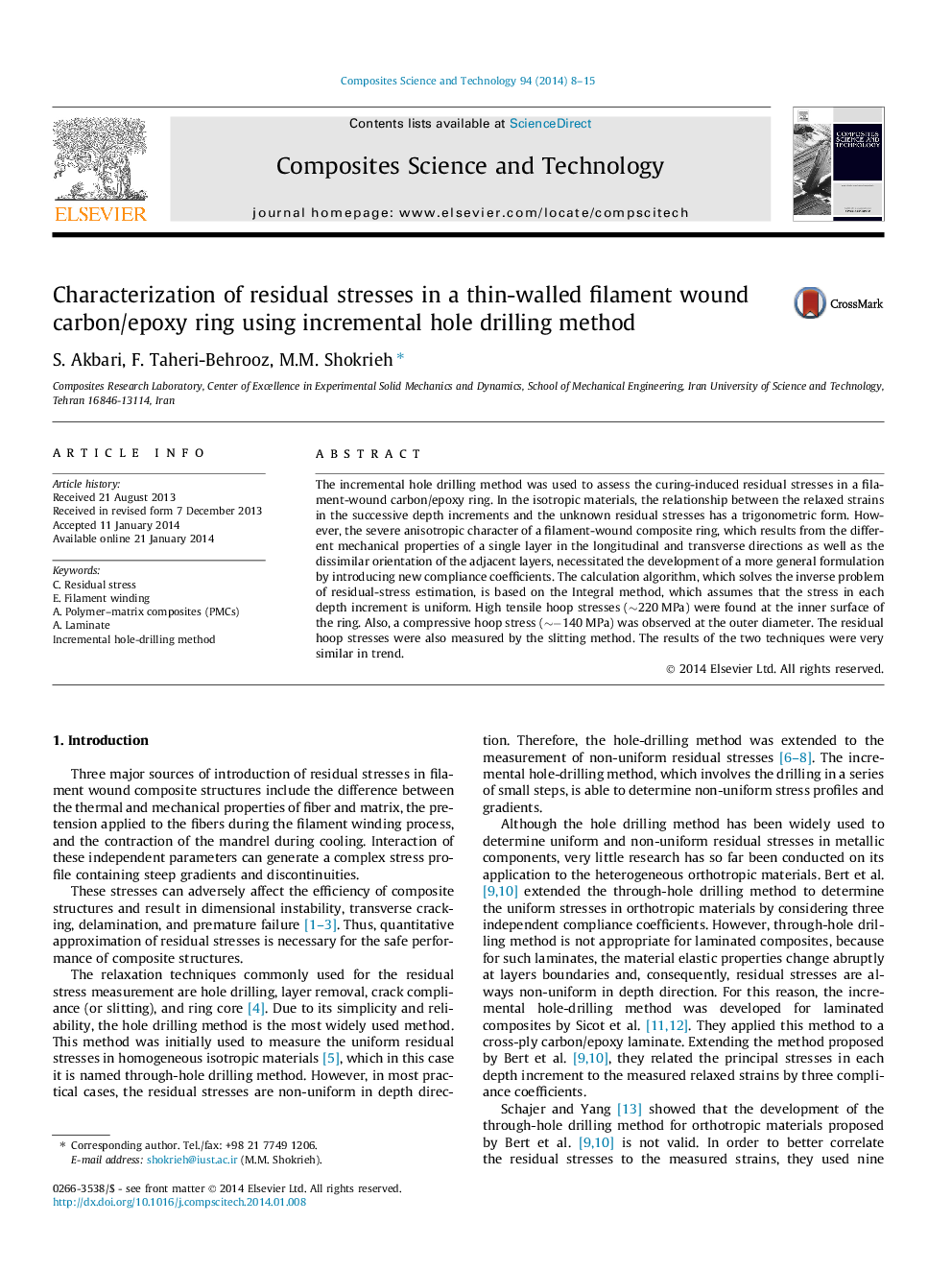| Article ID | Journal | Published Year | Pages | File Type |
|---|---|---|---|---|
| 820314 | Composites Science and Technology | 2014 | 8 Pages |
The incremental hole drilling method was used to assess the curing-induced residual stresses in a filament-wound carbon/epoxy ring. In the isotropic materials, the relationship between the relaxed strains in the successive depth increments and the unknown residual stresses has a trigonometric form. However, the severe anisotropic character of a filament-wound composite ring, which results from the different mechanical properties of a single layer in the longitudinal and transverse directions as well as the dissimilar orientation of the adjacent layers, necessitated the development of a more general formulation by introducing new compliance coefficients. The calculation algorithm, which solves the inverse problem of residual-stress estimation, is based on the Integral method, which assumes that the stress in each depth increment is uniform. High tensile hoop stresses (∼220 MPa) were found at the inner surface of the ring. Also, a compressive hoop stress (∼−140 MPa) was observed at the outer diameter. The residual hoop stresses were also measured by the slitting method. The results of the two techniques were very similar in trend.
